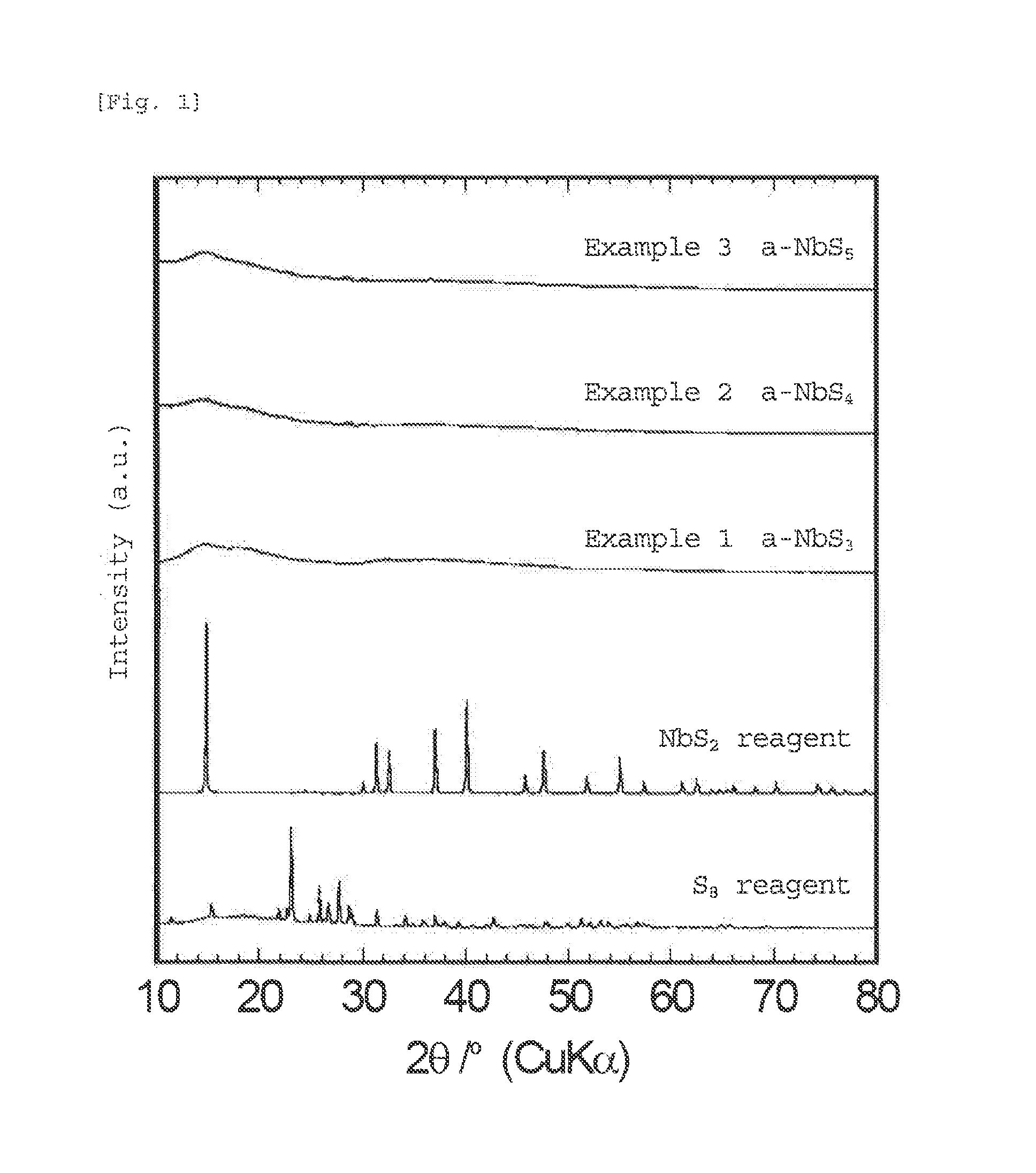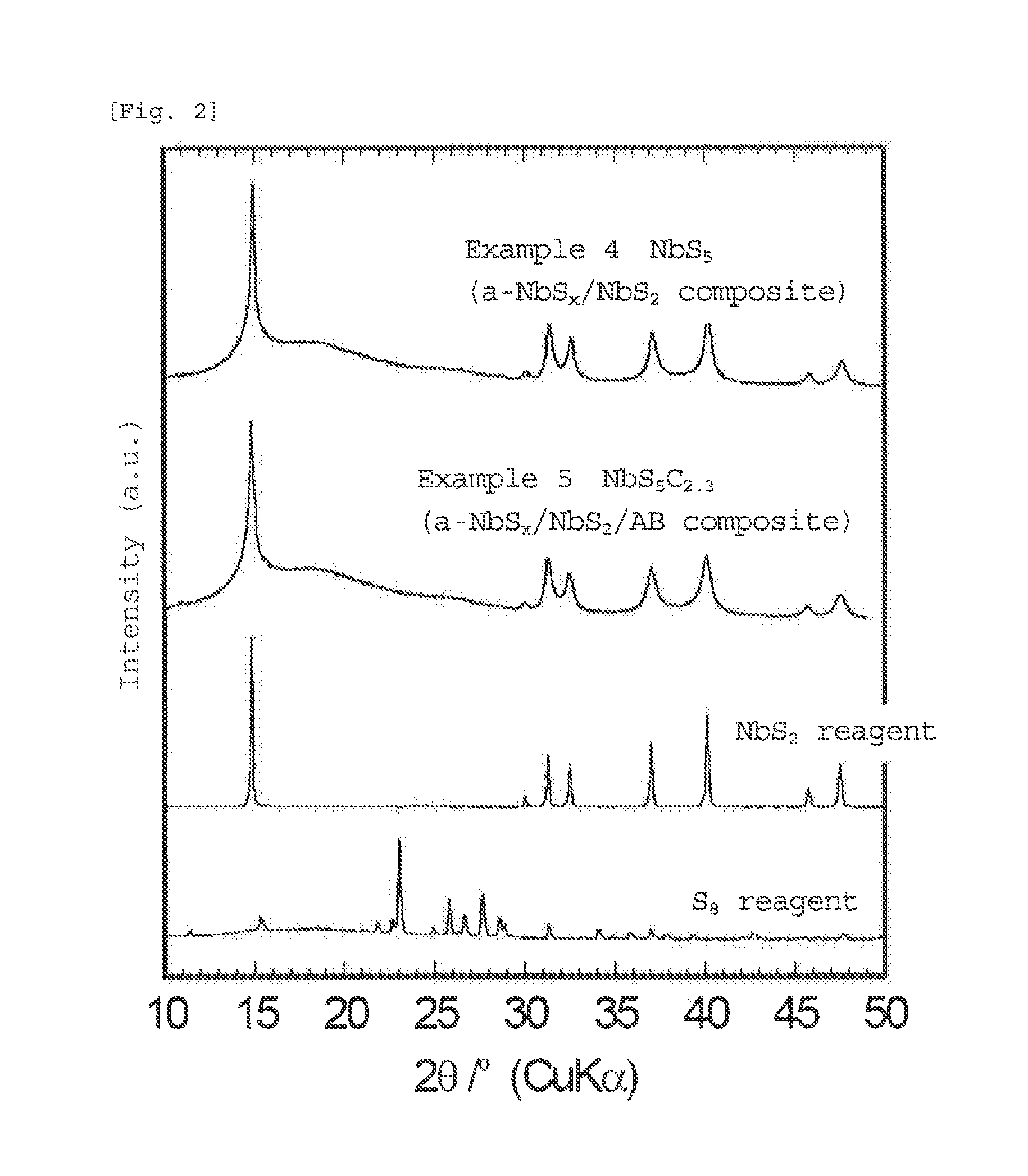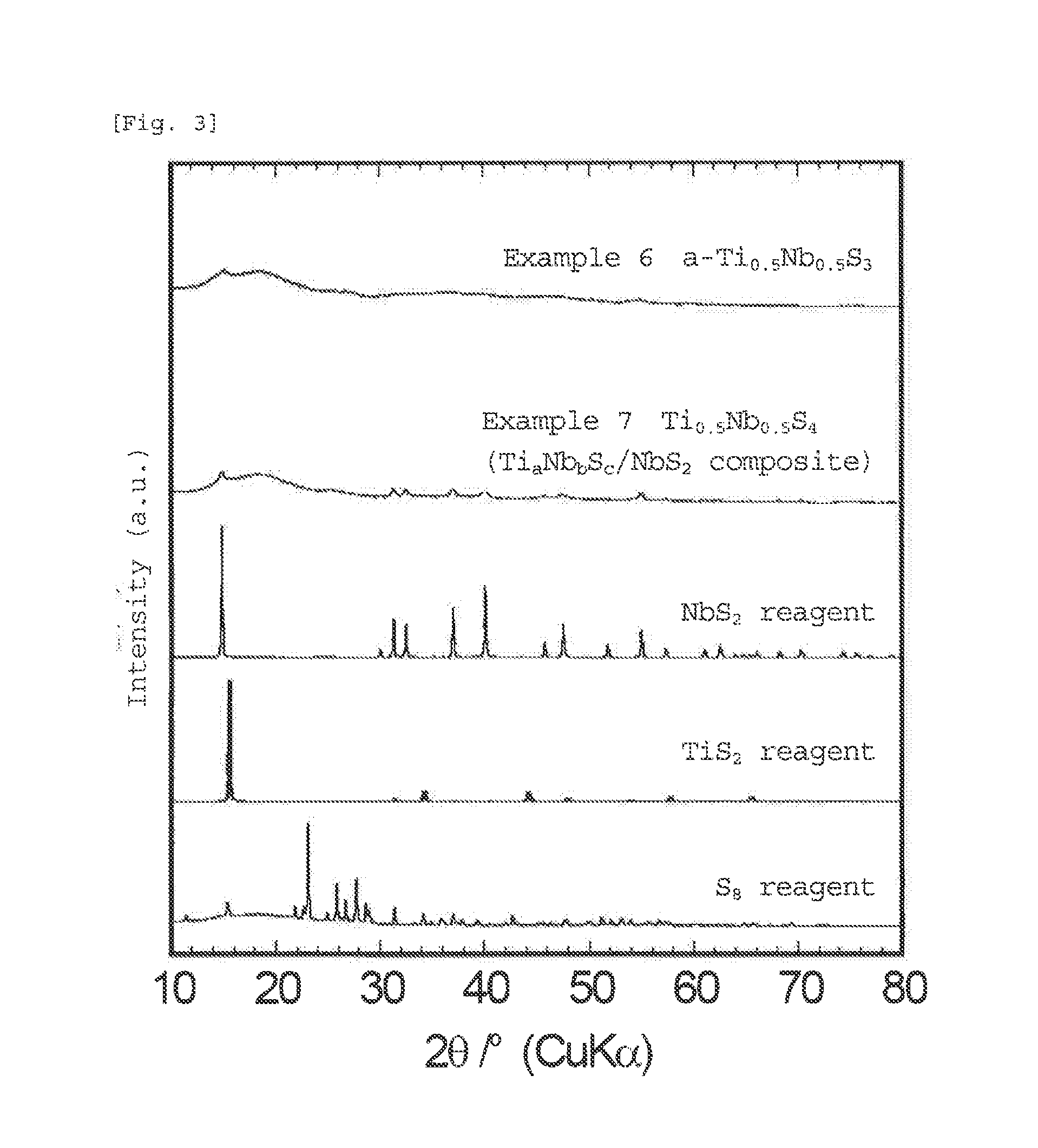Amorphous (Lithium) Sulfide or (Lithium) Titanium Niobium Sulfide
a technology of titanium niobium and lithium sulfide, which is applied in the direction of niobium compounds, non-metal conductors, cell components, etc., can solve the problems of low electronic conductivity of metal sulfides, low theoretical capacity of metal sulfides than sulfur, and low charge-discharge reversibility, etc., to achieve high sulfur ratio, increase charge-discharge capacity, and high charge-discharge capacity ratio ratio
- Summary
- Abstract
- Description
- Claims
- Application Information
AI Technical Summary
Benefits of technology
Problems solved by technology
Method used
Image
Examples
first embodiment
[0056]The sulfide according to the first embodiment of the present invention is a sulfide comprising an amorphous (lithium) niobium sulfide having an average composition represented by formula (1):
Lik1NbSn1
(wherein 0≦k1≦5; 3≦n1≦10; and when n1≧3.5, k1≦1.5, or an amorphous (lithium) titanium niobium sulfide having an average composition represented by formula (2):
Lik2Ti1-m2Nbm2Sn2
(wherein 0≦k2≦5; 0
[0057]The amorphous sulfide of the present invention is in an amorphous state in which diffraction peaks of the materials used as starting materials and the sulfide itself are hardly observed. Although the amorphous sulfide of the present invention has a high sulfur ratio in the average composition, little sulfur is present in the form of elemental sulfur; and sulfur is bound to niobium, titanium, and, optionally lithium or the like to form an amorphous sulfide. Thus, since the sulfide of the present invention is amorphous, the sulfide has many sit...
second embodiment
[0084]The sulfide according to the second embodiment of the present invention comprises an amorphous sulfide having an average composition represented by formula (3):
Lik3Ti1-m3Nbm3Sn3
(wherein 0≦k3≦5; 0<m3≦1; 2≦n3≦10; when n3≧3.5, k3≦1.5), and has an impurity concentration of not more than 2%.
[0085]The amorphous sulfide of the present invention is in an amorphous state in which diffraction peaks of the materials used as starting materials and the sulfide itself are hardly observed. Although the amorphous sulfide of the present invention has a high sulfur ratio in the average composition, little sulfur is present in the form of elemental sulfur, and sulfur is bound to niobium, titanium, and optionally lithium, or the like to form an amorphous sulfide. Thus, since the sulfide of the present invention is amorphous, the sulfide has many sites into which lithium can be inserted, and has gaps in the structure, which can three-dimensionally form a conductive pathway for lithium. Further, t...
third embodiment
[0108]The sulfide according to the third embodiment of the present invention has an average composition represented by formula (4):
Lix4Ti1-m4Nbm4Sn4Cx
(wherein 0≦k4≦5; 0<m4≦5; 0<m4≦1; 2≦n4≦10; 0≦x≦10; when n4≧3.5, k4≦1.5), and comprises crystalline amorphous (lithium) niobium sulfide or (lithium) titanium niobium sulfide as a matrix, and crystalline metal sulfide or carbon that is present in the matrix.
[0109]The amorphous (lithium) niobium sulfide or (lithium titanium niobium sulfide that forms a matrix in the sulfide of the present invention is in an amorphous state in which diffraction peaks of the materials used as starting materials and the sulfide itself are hardly observed. The average composition of the amorphous (lithium) niobium sulfide or (lithium) titanium niobium sulfide, which is a matrix in the sulfide of the present invention, and metal sulfide or carbon, which is contained in the matrix, has a high sulfur ratio (the matrix itself also has a high sulfur ratio). Howeve...
PUM
| Property | Measurement | Unit |
|---|---|---|
| 2θ | aaaaa | aaaaa |
| crystallite size | aaaaa | aaaaa |
| composition | aaaaa | aaaaa |
Abstract
Description
Claims
Application Information
 Login to View More
Login to View More - R&D
- Intellectual Property
- Life Sciences
- Materials
- Tech Scout
- Unparalleled Data Quality
- Higher Quality Content
- 60% Fewer Hallucinations
Browse by: Latest US Patents, China's latest patents, Technical Efficacy Thesaurus, Application Domain, Technology Topic, Popular Technical Reports.
© 2025 PatSnap. All rights reserved.Legal|Privacy policy|Modern Slavery Act Transparency Statement|Sitemap|About US| Contact US: help@patsnap.com



